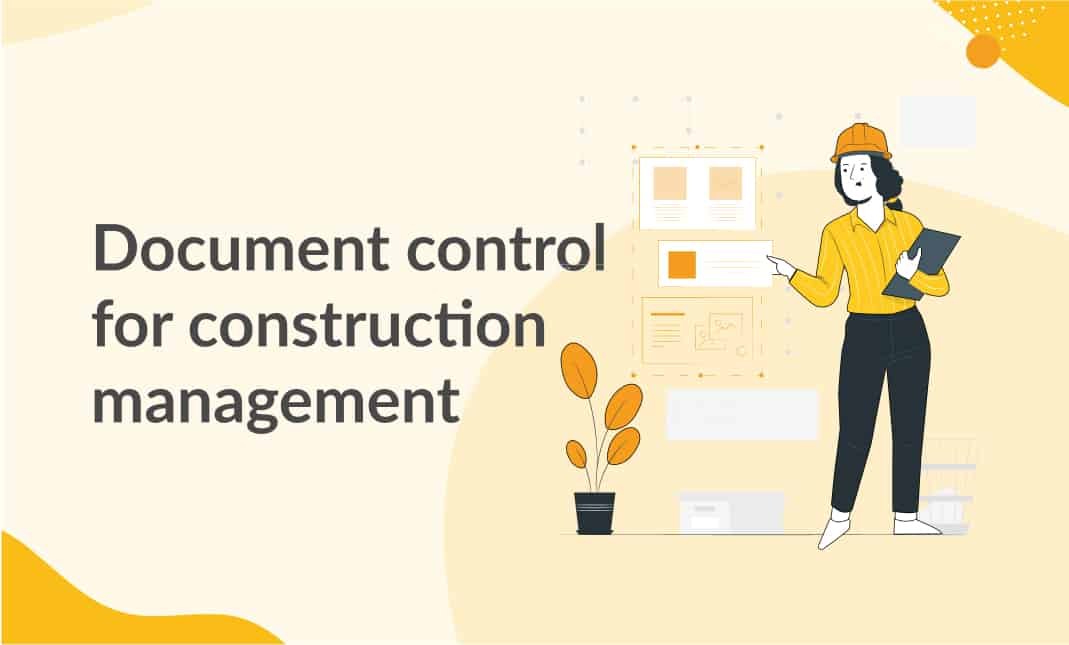Improve Your Operations: Construction Document Management Made Easy
Improve Your Operations: Construction Document Management Made Easy
Blog Article
Optimizing Task Partnership: Designer's Ideal Practices in Building And Construction Record Administration
In the detailed world of building jobs, the effective administration of building and construction files stands as a cornerstone for success. In the middle of this intricacy exists a critical question: just how can engineers improve cooperation processes to enhance project results?
Leveraging Cloud-Based Platforms
Leveraging cloud-based platforms is a basic method for modern architects in maximizing construction document administration processes. By transitioning from standard paper-based systems to cloud remedies, engineers can enhance collaboration, improve file access, and improve general job effectiveness. Cloud-based platforms use engineers the capacity to shop, share, and update building and construction files in real-time, ensuring that all employee have accessibility to the most present info despite their location. This ease of access promotes seamless interaction and control among task stakeholders, causing fewer mistakes and delays in the building and construction procedure.
Additionally, cloud-based systems provide a secure environment for saving sensitive task information, offering file encryption, routine backups, and customer permission setups to secure information honesty. Designers can likewise gain from the scalability of cloud services, allowing them to adjust storage space capacity and capability based on task needs. In general, leveraging cloud-based systems encourages architects to maximize their building file management processes, driving higher partnership, efficiency, and success in their tasks.
Executing Version Control Equipment
Having actually developed the benefits of cloud-based platforms in building file administration, engineers can now boost their document control procedures by implementing Variation Control Equipment. Version Control Systems (VCS) are necessary tools that track changes in records, guaranteeing that employee are always functioning with the current and most accurate information. By implementing VCS, engineers can keep a central database where all task records are saved, enabling smooth cooperation while reducing the risk of errors and version disputes.
One key benefit of Variation Control Systems is the capability to track the full history of record modifications, enabling customers to change to previous variations if needed (construction document management). This feature is especially valuable in building and construction jobs where design models and modifications are common. Moreover, VCS facilitates much better communication among employee by providing a clear audit path of that made specific modifications and when they were made. This transparency not just boosts responsibility but also aids in resolving disagreements or inconsistencies that may arise during the task lifecycle.
Developing Interaction Procedures
To ensure effective and effective job coordination, architects have to establish clear and robust communication procedures within their building and construction file administration processes. This platform might be Bonuses a project management software application, e-mail strings, or cloud-based storage space services.
Additionally, interaction protocols check it out need to likewise include standards on how to deal with problems, modification orders, and urgent problems that may develop throughout the job lifecycle. Developing an organized strategy to interaction ensures that all stakeholders get on the same web page, advertises transparency, and inevitably adds to the effective completion of the building and construction project.
Making Use Of BIM Software Application for Sychronisation
BIM software application plays an essential duty in improving coordination amongst job staff member in the construction market. Structure Details Modeling (BIM) facilitates cooperation by supplying a centralized system where designers, engineers, contractors, and other stakeholders can collaborate in a coordinated way. Through BIM software, job participants can access and upgrade a common model which contains in-depth information concerning the building design, construction parts, and project routines.

In addition, BIM software allows real-time partnership and interaction amongst employee, no matter their physical place. Via cloud-based BIM platforms, project stakeholders can access the most recent project information, track adjustments, and make notified decisions promptly. Generally, leveraging BIM software for sychronisation boosts project efficiency, productivity, and inevitably causes effective project end results.
Ensuring Information Security and Conformity
In the world of building file monitoring, guarding information stability and ensuring regulative conformity are extremely important factors to consider for designers and other project stakeholders. Designers must carry out durable security procedures to secure delicate task information from unauthorized gain access to or breaches.

Final Thought
Finally, architects can optimize project partnership in construction record administration by leveraging cloud-based systems, carrying out version control systems, developing interaction methods, making use of BIM software application for control, and making sure data protection and compliance. These ideal methods assist simplify the building procedure, enhance communication among task stakeholders, and enhance effectiveness in job delivery. By complying with these guidelines, engineers can properly handle construction records and assist in successful job results.
With BIM software, project participants can access and update a common model that has thorough details regarding the building style, building elements, and task timetables.
Through cloud-based BIM platforms, project stakeholders can access the most current project details, track changes, and make educated decisions immediately - construction document management. Overall, leveraging BIM software for control enhances job efficiency, efficiency, and inevitably leads to successful job results
In conclusion, architects can enhance project collaboration in building and construction paper administration by leveraging cloud-based platforms, carrying out version control systems, developing interaction methods, making use of BIM software program for coordination, and making sure information protection and conformity. These ideal methods assist simplify the building and construction procedure, boost communication among project stakeholders, and enhance performance in job shipment.
Report this page